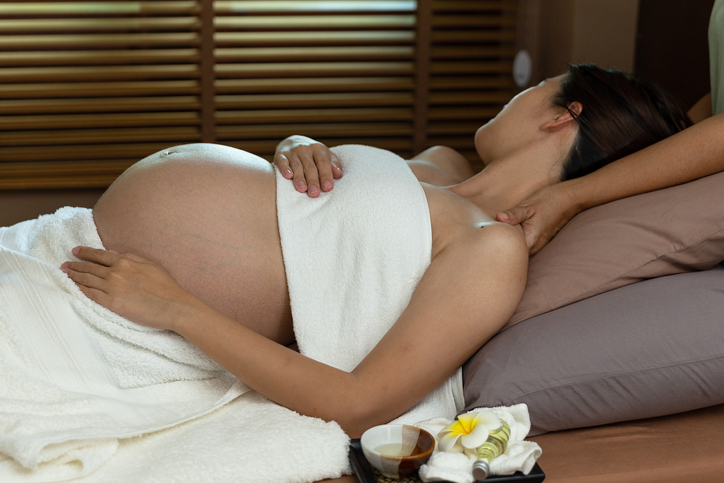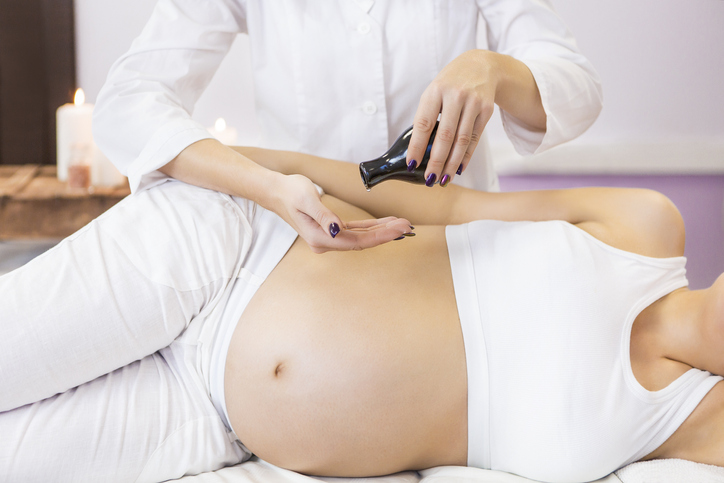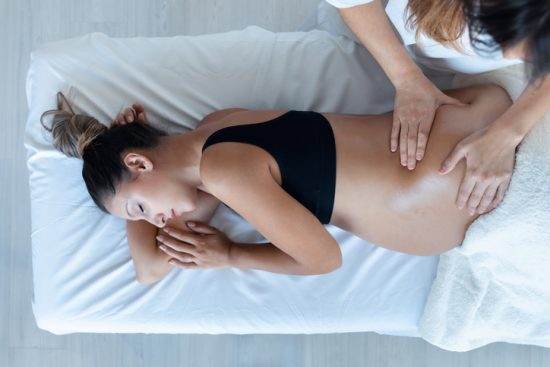Massages have many uses and benefits, and that still rings true with prenatal massages. Prenatal massages relieve pressure, which has an effect on many different aspects. For instance, it relaxes the mother-to-be which in turn allows for better sleep. As well, it helps with pain relief which allows for stress reduction which leaves the client happier.
Prenatal massages seem to be a no-brainer, but it is imperative that the massage therapist have the proper training to make sure that the client and her baby are safe and comfortable during the whole process.
Massage Therapy Training teaches Proper Positioning
The technique changes based on country and region. Here are some techniques based on Ontario standards. Firstly, you want to make sure the body is positioned properly. Ultimately, the mother’s and her baby’s safety and comfort are of the utmost importance. If the client has passed the 20-week mark, it is not suggested that she lay on her back as the weight of the baby can cause excess pressure on the abdomen and restrict blood flow. It is best to have them lay on their side while using pillows or padding to support the back, knees and feet if needed. Some massage therapists prefer to have their clients to be sitting upright or to be in a semi-reclined position, which may become your preference when you start practicing.

Techniques and Strokes
In terms of pressure, prenatal massages include very light and gentle pressure. The most common technique is effleurage, which includes long gliding strokes which are also used in Swedish massages. This style can also be used to relieve some of the contraction pain during labour.
The technique changes based on country and region. Here are a few techniques that you’ll learn in massage therapy training based on Ontario standards. For instance, let’s look at a foot rub. Pregnant women all of a sudden have a lot more pressure and weight they have to carry. For a foot rub, you’ll want to start with gentle pressure at the top of the foot, making your way down to the ankle using a circular motion. Although it is not dangerous, it is better to avoid the pressure point between the ankle bone and the heels to make sure you don’t cause any discomfort.
For back rubs, whether the client is sitting up or lying down, you’ll want to use both hands to create long strokes going up and back. Gently you can start to knead the muscles with the base of your hand. For shoulders, with the base of your palm, you’ll want to put light pressure on either side of the neck, gliding between the shoulder and the base of the skull directly below the ear. It is important not to massage the belly. It can be rubbed gently for a soothing effect, and you can do so with Vitamin E oil to help prevent stretch marks.

Health and Safety
Massage therapy courses, such as Regional Anatomy will teach you about the different areas of the body and how they may be affected by outside pressure, medications and medical conditions. All prenatal massages are tailored to the mother’s health concerns. Let’s say this mother had bad morning sickness, then you should avoid using rocking techniques. You’ll most likely have your clients fill out a form with all their health and medical conditions, medications used etc, to ensure they have a safe experience.
You should recommend that your clients drink extra water in the day or two before the massage, and after the massage. In general, massage can be dehydrating and considering that women who are pregnant need extra fluids, it makes staying hydrated that much more important.
Looking to start massage therapy school in Ontario?
Let the journey begin!




